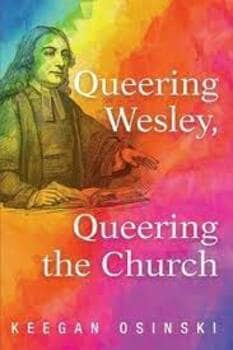Queering the Church, The Influence of Paul
Paul’s Conversion on the Road to Damascus
Today, the Church celebrates the feast of the conversion of St Paul. Just in that title, there is encouragement for LGBT Christians: just as Saul of Tarsus, scourge of the early Christians found God and became instead a great champion of their cause, it is possible that the institutional churches, which are so widely seen by the queer community as their persecutors, could likewise meet God and undergo a similar change of heart, to become our champions – turning to what Jenni at Queering the Church described a few days ago as a “preferential option for the queer“. This is not as far-fetched as it may seem: there has already been a most extraordinary transformation of religious responses to homoerotic relationships over the last half century, and an increasing number of influential churchmen and women are becoming enthusiastic straight allies, champions of our cause.
I am working towards an extended post on this theme (which will be the basis of an address I will be giving to the Quest annual conference in September), so will not go over the evidence here. Meanwhile, in honour of Paul, I reproduce below a post I wrote in 2010.
*********
There is much that is paradoxical in the figure of Paul. In his dual persona as Saul / Paul, he is renowned as both a one-time feared persecutor of Christians, and as the greatest of all the early missionaries, who spread the word far beyond it s original geographic compounds, and author of by far the most influential Christian texts outside the Gospels themselves. In the same way, as the author of the most infamous New Testament clobber texts, he is widely regarded as strongly condemning homoerotic relationships – and yet Paul Halsall lists him in his Calendar of LGBT Saints:
There is considerable debate over those anti-gay “proof -texts”, but whatever the conclusions, there is much, as Anglican Bishop of Newark John Spong has pointed out, which leads one to suspect Paul might have been “queer” in some way. The fact he was never married, unusual for a Jew of his time, his companionship with a series of younger men, especially St. Timothy, his mention of an unnamed “thorn in the flesh”. and, possibly, his disdain for some types of exploitative homosexual relationship in his period, all raise questions, questions which cannot be answered it must be admitted, about his sexuality.
What are we to make of this?
First, let us dismiss the idea that Paul’s writing is anti-gay: it isn’t, and further, much of his message is precisely the opposite, arguing for full inclusion of all. For a counter to the standard view of Paul as anti-gay, anti-sex, see Reidulf Molvaer, Sex & St. Paul the Realist
St. Paul was, in many ways, an ascetic and happy to be so, but he refused to make asceticism a general model or ideal for Christians – most people cannot live by such principles, especially in the area of sex. In the seventh chapter of his first letter to Corinth, he rejects any appeal for his support of sexual abstinence as ethically superior to active sexual relations. He sets limits, but does not limit legitimate sexual relations to marriage. In his day, it was commonly believed that homosexual practice, more easily than heterosexual relations, could bring people into harmony with the unchangeable nature of God. This Paul strongly rejects in the first chapter of his letter to Rome. Otherwise he does not write about “natural” homosexuality. In fact, it is a logical inference from the principles he sets forth in his letter to Corinth that loving, lasting homosexual relations are ethically as valid as heterosexual relations. Dr. Molvaer maintains that insight into contemporary ideologies can be a help to understanding what the New Testament says about these matters. Today, as in the early Church, extraneous influences in these areas can easily distort genuine Christian moral concerns as they are stated by Christ and St. Paul.
Then, consider his person. Astonishingly little is known for certain of Paul the man, but Bishop Spong is not the only one to have suggested that Paul may have had same close same -sex relationships of his own. Gay Catholic blogger Jeremiah Bartram, who recently spent time on a pilgrimage “in the footsteps of St Paul” has reflected deeply on the life and writign of Paul, and concluded that on balance, the suggestion is sound.
In the absence of hard evidence, personally I am happy to leave this discussion to others with greater scholarship and expertise behind them. My interest in the queer saints is in the lessons they hold for us today, and here I think there is one clear message, which lies in the best known story of al about Paul, his conversion on the road to Damascus. This has entered language as a “Damascene Conversion”, and therein lies hope. For if Saul, the renowned persecutor of Christians, could undergo such a complete change of heart and become instead active as the most famous proselytizer, so too is there hope for the religion -based persecutors of sexual minorities today. Not only is there hope, but there is already abundant evidence from the very many Christians in the modern world who have experienced just such Damascene conversions, going from direct, outright condemnation of same sex relationships, to actively advocating full inclusion in church. These changes of heart, usually coming after intensive study of Scripture and extensive discussions with gay and lesbian church members, have already been responsible for changes of policy in several denominations, and a more welcoming atmosphere in many local congregations. This process will continue.
For those Catholics who like to pray to the saints, you can freely include St Paul in you prayers. This is not because he was queer (although he may have been), but because his own conversion experience provides a useful model for all those modern day conversions that we need among the bigots who use religion as a cloak for prejudice and discrimination.
Paul’s Celebration of God’s Gift of Sexuality.
The standard view of sex and the Bible is that sexuality must be reigned in, and restricted to the confines of marriage. The standard view, says Norwegian scholar Reidulf Molvaer (Two Making One : Amor and Eros in Tandem), is wrong.
- St Paul (El Greco)
“Dominant views about sex have in most churches been distorted by centuries of negative accretions and become travesties of what we find in the Bible.” – Dr. Reidulf Molvaer In this book Dr. Reidulf Molvaer attempts to recapture the joyful, cheerful abandon in legitimate sexual relationships that we see in the Bible-yes, the Bible! From the Song of Solomon in the Old Testament to Saint Paul’s advice on intimacy in the New Testament, you are presented with the real meanings of these ancient texts and learn why the Church has interpreted the Song as an allegory rather than as a description of the joyous sexual experience it truly is. Could there be any greater glorification of sex than to let ideal love between man and woman illustrate the union between the devout and the divine? Dr. Molvaer demystifies “fairytale images” of the Virgin Mary, compares biblical sexual ethics to various cultures and discusses tales of eccentrics who have been elevated to sainthood. This book rediscovers what has been misrepresented for generations and encourages Christians and others to think afresh about one of the greatest and most disputed acts of devotion found in the Holy Bible.
The problem with the standard view is that it makes too much of a simplistic reading of the texts in modern translations ignoring the historical context on the one hand, and on the traditions dating from the early church fathers on the other. Molvaer concerns himself with the contextual understanding of the words in the original texts. (Other writers, such as Trevor Jennings, have noted how the early Christian ascetics misunderstood the Greek stoics, on whom they based much of their case).
For example, one chapter of “Two Making One discusses the well-known passage from Corinthians where Paul argues in favour of “marriage”, for those unable to remain celibate. He stresses that the Corinthians for whom Paul was writing would not have interpreted the word in the same way we do today. (How could they? The notion of marriage as a religious sacrament is a modern innovation. Even as a legal contract, in earlier centuries marriage was largely a matter for the wealthy classes, who needed to protect property and inheritance rights. The poorer people who had nothing, had no need for marriage. The Greek word which we routinely translate as “wife” could equally well mean simply “woman”. In the same way, the verb for “to marry”, as in take a wife, could simply mean “to take a woman” – and was also used simply as a euphemism for “have sex”. ) Reidulf Molvaer also reminds us that Corinth was renowned as a city of abundant and unrestrained sexuality. Putting all the evidence together, he argues that far from restricting sexual expression to “marriage” in the modern sense, Paul is simply arguing for responsible sex in committed relationships. Elsewhere in this book, he also discusses the celebration of sex (outside of marriage as well as in it) in the Song of Songs, and also in Genesis.
In this book, he discusses only sex between man and woman. Elsewhere, (Sex & St. Paul the Realist) he makes clear his view that Paul was as accepting of sexual relationships between men, which were commonplace and celebrated by the Corinthians, just as they were across the Roman-Greek world at the time.
St. Paul was, in many ways, an ascetic and happy to be so, but he refused to make asceticism a general model or ideal for Christians – most people cannot live by such principles, especially in the area of sex. In the seventh chapter of his first letter to Corinth, he rejects any appeal for his support of sexual abstinence as ethically superior to active sexual relations. He sets limits, but does not limit legitimate sexual relations to marriage. In his day, it was commonly believed that homosexual practice, more easily than heterosexual relations, could bring people into harmony with the unchangeable nature of God. This Paul strongly rejects in the first chapter of his letter to Rome. Otherwise he does not write about “natural” homosexuality. In fact, it is a logical inference from the principles he sets forth in his letter to Corinth that loving, lasting homosexual relations are ethically as valid as heterosexual relations. Dr. Molvaer maintains that insight into contemporary ideologies can be a help to understanding what the New Testament says about these matters. Today, as in the early Church, extraneous influences in these areas can easily distort genuine Christian moral concerns as they are stated by Christ and St. Paul.
This week, the Catholic Church will be celebrating the shared feast of SS Peter & Paul. As we do so, we would do well to remember this useful corrective to the conventional idea of Paul as some kind of killjoy on sexual matters.
This article originally found at https://queerchurch.wordpress.com/queer-saints-martyrs-and-others/1-prologue-before-christianity/gospels/the-followers-of-jesus/the-conversion-of-st-paul/
More articles exposing Paul as a false teacher here.
Please consider reposting or linking to this article. Thank you!! RD 🙂


